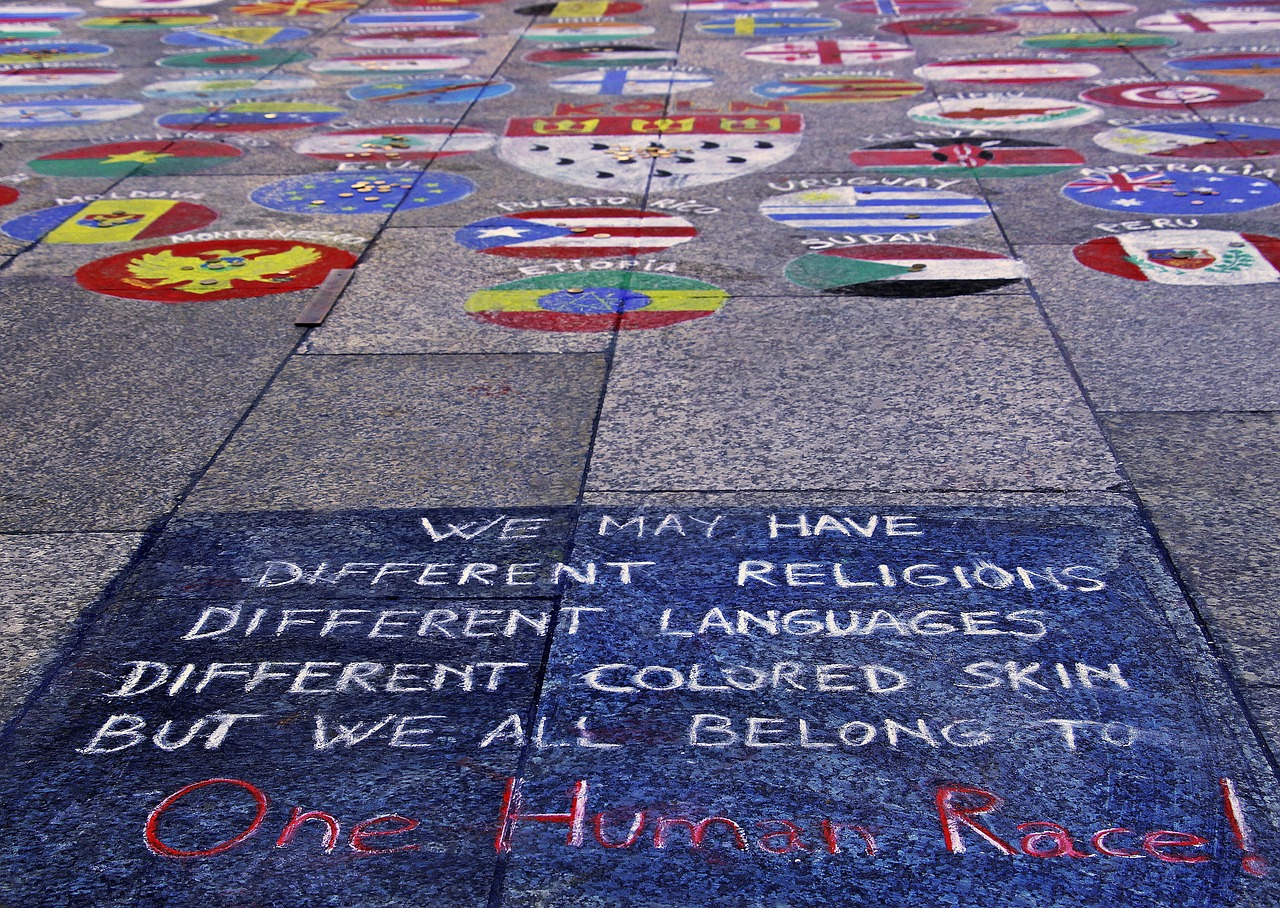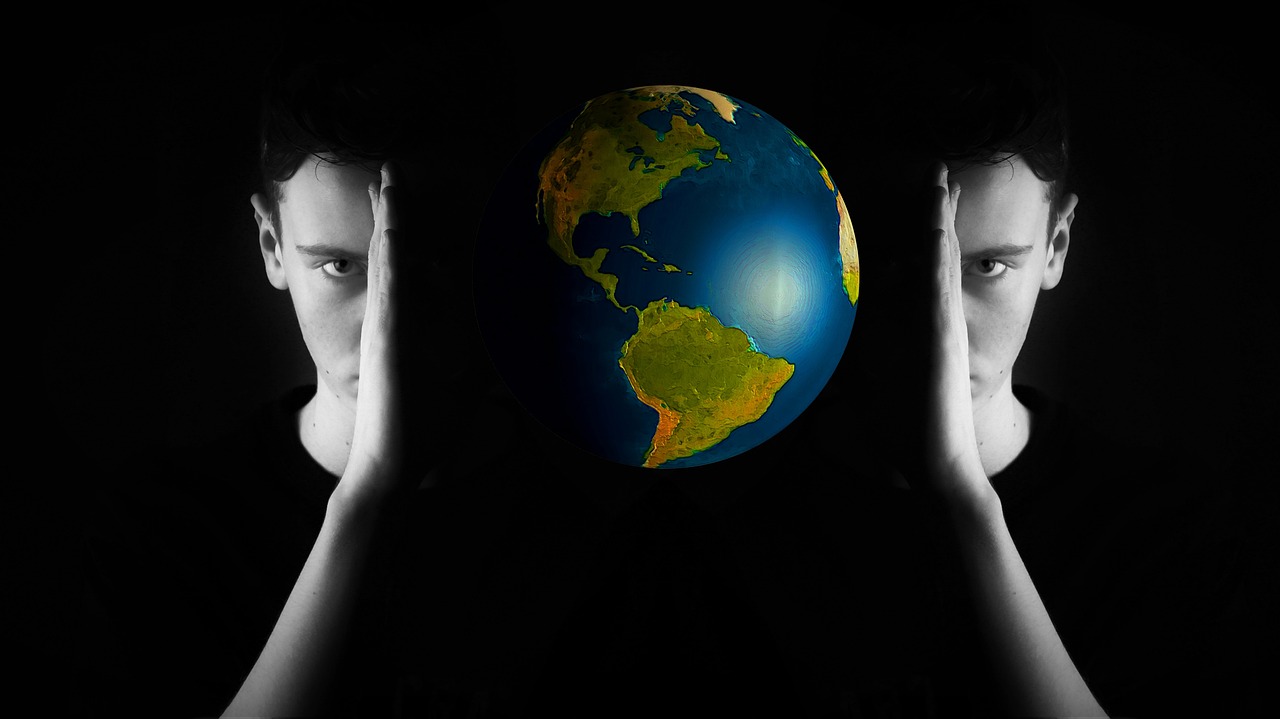Understanding the Dimensions of Reality - A Metaphysical Approach
The concept of reality is a complex tapestry woven from threads of perception, belief, and existence. When we dive into the dimensions of reality, we are not just skimming the surface; we are embarking on a journey through metaphysical landscapes that challenge our understanding of what it means to exist. Have you ever wondered why two people can experience the same event but interpret it entirely differently? This divergence in perception is a pivotal aspect of reality that is shaped by numerous factors, including our consciousness, cultural backgrounds, and philosophical beliefs.
At its core, reality is not merely a collection of physical phenomena; it encompasses a vast array of experiences and interpretations. Imagine reality as a multi-layered cake, where each layer represents a different dimension of existence. The flavors of these layers are influenced by our thoughts, emotions, and the collective consciousness of society. Some may find the icing sweet and delightful, while others may perceive it as overly rich or even bitter. This subjective experience is what makes reality so fascinating and multifaceted.
In the realm of metaphysics, we explore questions that go beyond the tangible. What is the essence of our existence? How do our beliefs shape our perception of reality? These inquiries are not just academic; they resonate with our everyday lives. By delving into these dimensions, we can start to unravel the mysteries that govern our experiences and interactions. Whether you’re a skeptic or a believer, understanding these dimensions can provide you with insightful perspectives on your own life and the world around you.
As we navigate through various frameworks and philosophies, we will encounter different interpretations of reality. Some may argue that reality is a construct of our minds, shaped by our thoughts and experiences. Others may assert that there exists an objective reality independent of our perceptions. This debate between idealism and realism is central to our exploration, as it influences how we engage with the world and each other.
Ultimately, the quest to understand reality is not just an intellectual exercise; it's a deeply personal journey. It invites us to reflect on our own beliefs, challenge our perceptions, and expand our consciousness. So, are you ready to peel back the layers of reality and discover what lies beneath?
Delving into the fundamental aspects of reality, we find ourselves at the intersection of philosophy and science. Philosophical interpretations offer us frameworks to understand existence, while scientific theories provide empirical evidence that challenges our perceptions. For instance, quantum mechanics suggests that particles can exist in multiple states simultaneously, which raises questions about the nature of reality itself. Is reality a definitive state or a fluid concept that shifts based on our observations? This interplay between philosophy and science serves as a reminder that our understanding of reality is constantly evolving.
When we talk about reality, we cannot ignore the role of consciousness. Our awareness shapes not only how we perceive reality but also how we interact with it. The layers of consciousness can be likened to the different frequencies of a radio; tuning into a specific frequency allows us to experience a particular reality. Our daily experiences, dreams, and even spiritual awakenings are all part of this vast spectrum of consciousness.
Understanding the varying levels of awareness helps us comprehend how humans perceive reality differently. From the mundane tasks of daily life to profound spiritual experiences, our awareness influences everything we do. For instance, when you’re fully present in a moment, you may experience a heightened sense of reality, as if the world around you has become more vivid and alive. Conversely, when your mind is cluttered with distractions, reality can feel dull and monotonous. This fluctuation in awareness impacts our decisions, relationships, and overall well-being.
Examining the role of the subconscious mind reveals how hidden beliefs and memories shape our perception of reality without our conscious awareness. Much like an iceberg, where only a small portion is visible above the surface, our conscious thoughts are just the tip. The vast majority of our beliefs, fears, and desires lie beneath the surface, influencing how we experience the world. Recognizing these subconscious influences can be a powerful tool for personal growth and transformation.
Practices such as meditation and mindfulness can lead to expanded states of consciousness, offering insights into deeper dimensions of reality. These practices allow us to quiet the noise of the external world and tune into our inner selves. As we explore these expanded states, we may discover new perspectives on our existence, leading to a richer understanding of reality. The journey inward can be as enlightening as the journey outward, revealing truths that resonate deeply within us.
The concept of collective consciousness is another fascinating dimension. It highlights how shared beliefs and experiences shape societal perceptions and realities. Just as individual consciousness contributes to personal reality, the collective consciousness influences the broader cultural landscape. This interconnectedness can be seen in movements for social change, where the collective voice of the people can shift societal norms and redefine reality. Understanding this dynamic encourages us to consider the impact of our beliefs on the world around us.
Exploring various philosophical frameworks allows us to see how different schools of thought interpret the nature of reality and our place within it. Each philosophy offers a unique lens through which we can examine our existence and experiences.
Contrasting idealism and realism reveals the ongoing debate about what is truly real. Idealists argue that reality is fundamentally mental and shaped by our perceptions, while realists maintain that an objective reality exists independent of our thoughts. This philosophical dichotomy challenges us to consider the implications of our beliefs and how they influence our experience of the world.
Focusing on phenomenology, we highlight how subjective experiences contribute to our understanding of reality. This perspective emphasizes the importance of perception in shaping existence, reminding us that our experiences are valid and meaningful. By acknowledging the role of individual perception, we can foster a deeper appreciation for the diverse realities that coexist in our world.
- What is the difference between reality and perception? Reality refers to the state of things as they exist, while perception is how we interpret and understand those things.
- Can reality change based on our beliefs? Yes, our beliefs can significantly influence our perception of reality, shaping our experiences and interactions.
- How does consciousness affect our understanding of reality? Consciousness allows us to engage with and interpret reality, with different levels of awareness leading to varying experiences.

The Nature of Reality
When we dive into the nature of reality, we find ourselves on a journey that intertwines philosophy, science, and our own perceptions. It's like peeling an onion, layer by layer, revealing deeper truths and sometimes even bringing tears of realization. What is reality, really? Is it just what we see, or is there more lurking beneath the surface? Different philosophical interpretations and scientific theories offer us a plethora of answers, each with its own flavor and depth.
At its core, reality can be seen as the sum of all experiences, perceptions, and the physical world around us. However, the way we interpret these experiences is what makes reality a complex tapestry. For instance, philosophers have long debated whether reality exists independently of our perceptions (realism) or if it is shaped by our consciousness (idealism). These two schools of thought serve as the foundation for many discussions about existence. Imagine standing on a busy street; your reality is shaped not just by the cars and buildings around you, but also by your thoughts, feelings, and experiences. This subjective nature of reality is what makes it so fascinating.
Moreover, science adds another layer to this discussion. Theories from quantum physics suggest that reality is not as fixed as we once thought. For example, the famous double-slit experiment demonstrates that particles can behave like waves and vice versa, depending on whether they are observed. This phenomenon raises questions about the role of the observer in shaping reality. Are we merely passive witnesses, or do we actively participate in the creation of our own realities? It's a bit like a magician pulling a rabbit out of a hat; the trick lies in the perception of the audience.
To further understand the nature of reality, we can categorize it into different frameworks:
- Physical Reality: This includes everything that can be measured and observed, such as matter, energy, and the laws of physics.
- Perceptual Reality: This is shaped by our senses and experiences. It's how we interpret the physical world around us.
- Social Reality: This encompasses shared beliefs, norms, and values that shape our interactions and societal structures.
Each of these layers interacts with the others, creating a rich and intricate understanding of existence. For example, consider how cultural beliefs can influence scientific inquiry. The scientific method is a tool designed to minimize bias, yet the questions we ask and the interpretations we make are often colored by our cultural backgrounds. It's a reminder that reality is not just a solitary experience; it is a collective one, shaped by the myriad interactions of individuals and their environments.
In conclusion, exploring the nature of reality is like embarking on an endless quest for knowledge. The more we uncover, the more questions arise. Are we simply observers in a grand cosmic play, or are we active participants in the creation of our own realities? This inquiry not only challenges our understanding but also invites us to explore the depths of our consciousness and the world around us.

Dimensions of Consciousness
When we talk about the , we're diving into a vast ocean of awareness that influences how we experience reality. Imagine consciousness as a multi-layered cake, where each layer represents a different state of awareness. Each slice offers a unique flavor and texture, showcasing how we perceive the world around us. In this exploration, we’ll uncover how these layers not only shape our understanding of existence but also impact our daily lives, decisions, and spiritual journeys.
At the core of this discussion are the levels of awareness. Think of them as the varying degrees of light that illuminate our thoughts and experiences. Some individuals may navigate life in a dimly lit room, where their perceptions are clouded by distractions and subconscious influences. Others may bask in the brilliance of full awareness, where insights and clarity flow freely. This spectrum of awareness is crucial because it affects how we interpret events, interact with others, and even engage with our own thoughts.
To truly grasp the essence of consciousness, we must first understand these levels. The journey begins with the subconscious mind, a mysterious realm that houses our hidden beliefs, memories, and emotions. It operates quietly in the background, influencing our reactions and perceptions without us even realizing it. For instance, have you ever felt an inexplicable fear or anxiety without knowing its origin? That’s your subconscious at work, shaping your reality based on past experiences and ingrained beliefs.
Our subconscious can be likened to a vast library filled with books of our experiences, emotions, and learned behaviors. Each book contributes to the narrative of our lives, often without our conscious input. This influence is profound; it can lead us to make choices that align with our hidden beliefs or, conversely, hinder our growth by trapping us in limiting patterns. For example, if someone subconsciously believes they are unworthy of success, they might sabotage opportunities that come their way, despite their conscious desires for achievement.
On the other end of the spectrum lies the concept of expanded consciousness. This is where practices like meditation and mindfulness come into play. By engaging in these activities, individuals can peel back the layers of their consciousness, gaining access to deeper insights and a more profound understanding of reality. Picture it as tuning a radio; when you find the right frequency, the static fades, and you begin to hear the music clearly. Similarly, by quieting the mind and focusing inward, we can tap into a richer, more expansive state of awareness.
Many who practice meditation report feeling a sense of connection to something greater than themselves, often describing it as a unifying experience with the universe. This expanded state of consciousness not only enhances personal insight but also encourages empathy and compassion, allowing us to see the world through a broader lens. It opens the door to experiencing reality not just as isolated individuals but as part of a larger tapestry of existence.
As we delve deeper, we encounter the idea of collective consciousness. This concept suggests that our individual consciousness is interwoven with that of others, creating a shared pool of beliefs, experiences, and cultural norms. Think of it as a massive web where each thread represents an individual’s thoughts and feelings, all contributing to the overall pattern of society. This collective dimension shapes our perceptions and realities, influencing everything from societal values to global movements.
In essence, the dimensions of consciousness are not merely abstract concepts; they are the very fabric of our existence. By understanding these layers, we can gain valuable insights into how we perceive reality and interact with the world around us. Whether through exploring our subconscious, expanding our awareness, or recognizing our connection to the collective, we embark on a journey that enriches our lives and deepens our understanding of what it means to be human.
- What is the difference between subconscious and conscious awareness?
The subconscious mind operates below our conscious awareness, influencing our thoughts and behaviors without us realizing it, while conscious awareness involves active, deliberate thought processes. - How can I expand my consciousness?
Practices such as meditation, mindfulness, and deep reflection can help you access expanded states of consciousness, allowing for greater insight and understanding. - What is collective consciousness?
Collective consciousness refers to the shared beliefs, values, and experiences of a group, which influence individual perceptions and societal norms.

Levels of Awareness
When we talk about the , we’re diving into a fascinating realm that shapes how we perceive reality. Think of it like an onion; each layer you peel back reveals deeper insights and complexities about our existence. At the surface, we have our everyday consciousness, where we navigate through daily tasks, make decisions, and interact with the world around us. This is where most of us operate most of the time, but what lies beneath is where the magic happens.
As we delve deeper, we encounter the subconscious mind. This part of our awareness holds memories, beliefs, and experiences that we may not actively think about but that influence our thoughts and behaviors. For instance, have you ever found yourself reacting strongly to a situation without fully understanding why? That’s your subconscious at work, shaped by past experiences and ingrained beliefs. It's like having a hidden guide that affects your choices without you even realizing it.
But wait, there’s more! Beyond the subconscious, we can explore the realm of expanded consciousness. This is where practices like meditation and mindfulness come into play. Engaging in these practices can allow us to transcend the ordinary and tap into higher states of awareness. Imagine being able to step back from the chaos of daily life, gaining clarity and insight that changes your perspective on everything. It’s like climbing a mountain; the higher you go, the broader your view becomes.
Now, let’s not forget about the concept of collective awareness. This level encompasses the shared beliefs and experiences of a group, shaping how communities perceive reality. Think about it: our understanding of right and wrong, beauty and ugliness, is often influenced by societal norms. When we align our personal awareness with the collective, we can either reinforce these beliefs or challenge them, creating ripples of change within our communities.
In summary, the levels of awareness are not just abstract concepts; they are interconnected layers that profoundly impact our understanding of reality. From the surface of everyday consciousness to the depths of the subconscious and the heights of expanded awareness, each level plays a crucial role in shaping our experiences and perceptions. By exploring these levels, we can unlock greater insights into ourselves and the world around us, leading to a more enriched and fulfilling existence.
- What are the different levels of awareness? The different levels include everyday consciousness, subconscious influences, expanded consciousness through practices like meditation, and collective awareness shaped by societal norms.
- How can I expand my consciousness? You can expand your consciousness through practices such as meditation, mindfulness, and engaging in reflective thinking.
- What role does the subconscious mind play? The subconscious mind influences our thoughts and behaviors based on past experiences and ingrained beliefs, often without our conscious awareness.
- What is collective consciousness? Collective consciousness refers to the shared beliefs and experiences of a group, which shape societal perceptions and norms.

Subconscious Influences
The subconscious mind is like an unseen puppet master, pulling the strings of our thoughts, emotions, and actions without us even realizing it. It holds a treasure trove of beliefs, memories, and experiences that we often overlook in our conscious state. Imagine walking through a garden filled with beautiful flowers, yet only noticing the ones that are in your direct line of sight. This is akin to how we interact with our subconscious; it is always there, influencing our perception of reality, but we may not always be aware of its presence.
Many people are unaware that their subconscious can dictate their reactions and decisions. For instance, a person might feel an inexplicable fear of public speaking, not realizing that it stems from a childhood experience of being laughed at during a school presentation. This hidden memory can create a powerful barrier, shaping their reality in ways they cannot consciously control. By understanding these hidden influences, we can begin to unravel the complexities of our experiences and perceptions.
To illustrate how the subconscious mind operates, consider the following examples:
- Beliefs: Deep-seated beliefs about ourselves—like feeling unworthy or incapable—can stem from past experiences and can significantly impact our self-esteem and relationships.
- Emotional Triggers: Certain situations or words can evoke strong emotional responses based on past experiences stored in the subconscious, often leading to reactions that seem disproportionate to the current scenario.
- Habits: Many habits we engage in daily are governed by subconscious programming, making it challenging to change them without conscious effort.
Understanding these influences allows us to take a step back and evaluate how our subconscious shapes our reality. Techniques such as journaling, therapy, or even guided meditation can help bring these hidden beliefs to the surface. By shining a light on them, we can begin to rewrite our narratives, allowing for a more empowered and conscious experience of life.
Moreover, exploring the subconscious can lead to profound realizations about our interconnectedness with others. Our shared experiences and collective memories can create a ripple effect, influencing not just our individual realities but also the collective consciousness of society. This interconnectedness emphasizes the importance of addressing subconscious influences, not only for personal growth but also for fostering a more empathetic and understanding world.
In conclusion, the subconscious mind is a powerful force that shapes our reality in ways we often overlook. By becoming aware of its influences, we can take charge of our perceptions and experiences, leading to a more fulfilling and authentic life. The journey into the depths of our subconscious may be challenging, but it is essential for truly understanding the dimensions of our existence.
- What is the subconscious mind? The subconscious mind is the part of our mind that stores memories, beliefs, and experiences that influence our thoughts and behaviors without our conscious awareness.
- How does the subconscious influence my daily life? It shapes your reactions, decisions, and perceptions of reality, often based on past experiences that you may not consciously remember.
- Can I change my subconscious beliefs? Yes, through practices like therapy, meditation, and self-reflection, you can uncover and change limiting beliefs stored in your subconscious.
- Why is it important to understand my subconscious? Understanding your subconscious allows you to take control of your life, make conscious choices, and improve your overall well-being.

Expanded Consciousness
When we talk about , we're diving into a realm that transcends our usual way of thinking. Imagine your mind as a balloon. When it's inflated, it can hold more air, just like your consciousness can hold more awareness and understanding when you engage in practices that promote expansion. Techniques such as meditation, mindfulness, and even certain artistic expressions can help stretch the boundaries of your awareness, allowing you to tap into deeper layers of reality.
Many people often wonder what it feels like to experience expanded consciousness. It's like stepping outside of your usual frame of reference. You start to see the world not just as a collection of objects and events, but as a vibrant tapestry woven together by interconnected energies and vibrations. This shift in perception can lead to profound insights about your place in the universe and your relationship with others.
One of the most fascinating aspects of expanded consciousness is how it can alter our sense of time and space. During deep meditation, for instance, individuals often report losing track of time, feeling as if they are in a timeless state where past, present, and future merge into one. This experience can be both exhilarating and disorienting, much like standing at a crossroads where every path is illuminated, yet choosing one feels impossible.
Moreover, practices that foster expanded consciousness can have significant benefits for our mental and emotional well-being. Research shows that individuals who regularly engage in mindfulness and meditation experience:
- Reduced stress and anxiety
- Improved focus and concentration
- Enhanced emotional regulation
- A greater sense of connection to others
These benefits are not just side effects; they are integral to the process of expanding consciousness. By quieting the mind and tuning into the present moment, we create space for new insights and perspectives to emerge. This is where the magic happens! You begin to realize that your thoughts and feelings are not just random occurrences but rather reflections of deeper truths about your existence.
In essence, expanding your consciousness is about breaking free from the confines of your habitual thought patterns. It’s like peeling back the layers of an onion—each layer reveals more about your true self and the universe around you. As you peel back these layers, you may find that your fears, limitations, and preconceived notions start to dissolve, allowing for a more authentic experience of life.
For those interested in embarking on this journey, consider incorporating the following practices into your daily routine:
- Mindfulness meditation: Start with just a few minutes a day, focusing on your breath and observing your thoughts without judgment.
- Journaling: Write about your thoughts and feelings to gain clarity and insight into your inner world.
- Nature immersion: Spend time in nature to connect with the earth and expand your awareness beyond the confines of daily life.
Ultimately, the journey toward expanded consciousness is deeply personal and unique for each individual. It's about finding what resonates with you and allowing yourself the freedom to explore the vast dimensions of reality that lie beyond your current understanding. So, take a deep breath, embrace the unknown, and let your consciousness expand like never before!
Q: What is expanded consciousness?
A: Expanded consciousness refers to a heightened state of awareness that allows individuals to perceive reality beyond their usual limitations, often achieved through practices like meditation and mindfulness.
Q: How can I experience expanded consciousness?
A: You can experience expanded consciousness by engaging in meditation, mindfulness practices, and spending time in nature, among other techniques that promote self-awareness.
Q: What are the benefits of expanded consciousness?
A: Benefits include reduced stress, improved focus, enhanced emotional regulation, and a greater sense of connection to others and the universe.
Q: Is expanded consciousness the same as enlightenment?
A: While related, expanded consciousness is not synonymous with enlightenment. Enlightenment often refers to a profound understanding of existence and the self, while expanded consciousness can be seen as a stepping stone toward that realization.

Collective Consciousness
When we talk about , we’re diving into a fascinating pool of shared beliefs, values, and experiences that bind us together as a society. Imagine a vast, invisible web connecting all of us—every thought, emotion, and experience intertwining to create a larger tapestry of understanding. This concept, which has roots in various philosophical and psychological theories, suggests that our individual consciousness is not isolated; rather, it’s part of a much larger, communal psyche. Think of it like a giant orchestra where each musician contributes to the symphony of human experience. If one musician plays out of tune, the entire composition can feel off-key.
Throughout history, thinkers like Carl Jung have explored this idea, positing that the collective unconscious is filled with archetypes—universal symbols and themes that resonate across cultures. For instance, the hero’s journey is a narrative found in countless stories worldwide, from ancient myths to modern films. This shared narrative structure influences how we perceive our own lives and the challenges we face. It’s as if we’re all writing our own stories based on the same script, drawing from a common pool of experiences.
But how does this collective consciousness manifest in our daily lives? It’s evident in various ways:
- Social Movements: When people unite for a cause, they tap into a shared sense of purpose that transcends individual differences. Think of movements like civil rights or environmental activism—these are fueled by a collective understanding of justice and responsibility.
- Cultural Trends: Ever notice how certain styles or ideas seem to sweep through society like wildfire? That’s collective consciousness at work! Fashion, music, and even slang often emerge from a shared cultural moment.
- Collective Trauma: Events like wars or natural disasters can create a shared emotional landscape, impacting generations. The collective memory of such experiences shapes societal behavior and attitudes.
Moreover, the advent of the internet has amplified our collective consciousness in unprecedented ways. Social media platforms allow individuals to share their thoughts and experiences in real-time, creating a global dialogue that influences public opinion and societal norms. This interconnectedness can lead to rapid shifts in consciousness, as ideas spread like wildfire. However, it can also result in echo chambers, where only similar beliefs are reinforced, potentially stifling diverse perspectives.
In essence, understanding collective consciousness is crucial for grasping how we navigate our world. It’s a reminder that while we are individuals with unique experiences, we are also part of a larger narrative. Our thoughts and actions ripple through the collective, shaping not just our reality but the reality of those around us. So, the next time you ponder your place in the universe, remember that you’re not alone; you’re part of a grand, interconnected story that spans time and space.
- What is collective consciousness? Collective consciousness refers to the set of shared beliefs, ideas, and moral attitudes that operate as a unifying force within society.
- How does collective consciousness affect society? It influences social movements, cultural trends, and even collective trauma, shaping how groups perceive and react to various issues.
- Can collective consciousness change over time? Yes, collective consciousness is dynamic and can evolve with societal changes, technological advancements, and cultural shifts.

Philosophical Perspectives
When we dive into the realm of , we uncover a rich tapestry of thought that has shaped our understanding of reality for centuries. Philosophers have long grappled with the question: what is reality? Is it something tangible and observable, or is it a construct of our minds? These inquiries lead us down two major paths: idealism and realism, each offering unique insights that challenge our perceptions and beliefs.
Idealism posits that reality is fundamentally mental. In this view, the material world is secondary to the ideas and perceptions that shape our experiences. Think of it like a dream; in dreams, the landscapes and characters are all products of our imagination. Similarly, idealists argue that what we perceive as reality is merely a reflection of our thoughts and consciousness. This perspective invites us to consider how our beliefs and desires can mold our experiences, leading to the question: if reality is shaped by our minds, can we truly know anything objectively?
On the flip side, realism asserts that reality exists independently of our perceptions. Realists argue that the world is made up of objects and events that remain constant, regardless of whether we are aware of them. Imagine a tree standing in a forest; whether or not anyone is there to see it, the tree exists. Realism pushes us to confront the idea that our perceptions may be flawed or limited, suggesting that there is a truth out there waiting to be discovered, even if we can’t always grasp it.
These contrasting philosophies lead to fascinating implications for human experience. For instance, if we lean towards idealism, we might find ourselves more focused on personal growth and self-awareness, believing that by changing our thoughts, we can change our reality. Alternatively, a realist perspective might encourage a more scientific approach, leading us to seek empirical evidence and objective truths about the world around us.
Another compelling philosophical approach is phenomenology, which emphasizes the importance of subjective experience in shaping our understanding of reality. This perspective highlights that our perceptions are not just passive reflections of the world but active interpretations influenced by our emotions, memories, and cultural contexts. For instance, two people can witness the same event but interpret it in vastly different ways based on their backgrounds and experiences. This leads to a profound realization: reality is not just what we see but how we interpret what we see. Phenomenology invites us to explore our experiences deeply, acknowledging that our understanding of reality is colored by our unique perspectives.
In summary, the philosophical perspectives on reality—be it idealism, realism, or phenomenology—offer a rich framework for exploring our existence. Each perspective challenges us to reflect on our beliefs and encourages a deeper understanding of how we interact with the world. As we navigate through these philosophical waters, we might ask ourselves: how do our beliefs shape our reality, and what can we learn from the interplay between our perceptions and the world around us?
- What is idealism? Idealism is the philosophy that reality is primarily mental and is shaped by our perceptions and thoughts.
- What is realism? Realism asserts that reality exists independently of our perceptions and is made up of objects and events that remain constant.
- What is phenomenology? Phenomenology focuses on subjective experiences, emphasizing how our emotions and memories influence our understanding of reality.
- How do these philosophies impact our daily lives? They shape our beliefs and actions, influencing everything from personal growth to scientific inquiry.

Idealism vs. Realism
When we dive into the philosophical waters of idealism and realism, we find ourselves navigating two distinct yet intertwined perspectives on the nature of reality. At its core, idealism posits that reality is fundamentally mental, suggesting that our perceptions, thoughts, and ideas shape what we consider 'real.' Think of it like a painter gazing at a blank canvas, where the colors and strokes represent our thoughts, emotions, and experiences, ultimately creating the masterpiece of our reality. On the flip side, realism anchors itself in the belief that an objective reality exists independent of our perceptions. It's akin to looking through a window at the world outside, where the trees, cars, and people exist regardless of whether someone is there to witness them.
The clash between these two perspectives raises intriguing questions about our understanding of existence. For instance, if reality is merely a construct of our minds, can we trust our senses to provide an accurate depiction of the world around us? Conversely, if reality exists independently, how do we account for the subjective experiences that shape our individual truths? These questions invite us to explore the implications of each viewpoint on our daily lives and interactions.
To further illustrate the differences between idealism and realism, consider the following table:
| Aspect | Idealism | Realism |
|---|---|---|
| Nature of Reality | Reality is a mental construct. | Reality exists independently of perception. |
| Perception | Our perceptions shape reality. | Perceptions can distort reality. |
| Truth | Truth is subjective and varies by experience. | Truth is objective and universal. |
| Philosophical Roots | Plato, Berkeley | Aristotle, Kant |
As we contemplate these perspectives, it becomes clear that both idealism and realism offer valuable insights into our understanding of reality. Idealism encourages us to recognize the power of our thoughts and beliefs in shaping our experiences, while realism grounds us in the importance of objective truths that exist beyond our subjective interpretations. This dynamic interplay between the two philosophies can enrich our understanding of the world, prompting us to question our assumptions and broaden our perspectives.
Ultimately, the debate between idealism and realism is not merely an academic exercise; it speaks to the very essence of our human experience. Whether we lean more towards the idealistic notion that our minds create our reality or the realistic view that there is an external world waiting to be discovered, we are all engaged in a continuous journey of exploration and understanding. This journey invites us to embrace the complexities of existence, acknowledging that sometimes, the lines between what is real and what is imagined can blur, leading to profound insights and revelations.
- What is idealism? Idealism is a philosophical perspective that asserts that reality is primarily shaped by our mental states and perceptions.
- What is realism? Realism is a philosophy that maintains that an objective reality exists independently of our thoughts and perceptions.
- How do idealism and realism differ? Idealism focuses on the subjective nature of reality, while realism emphasizes the existence of an objective reality that is not influenced by individual perceptions.
- Can both perspectives coexist? Yes, many people find value in both perspectives, recognizing that our perceptions influence our experiences while also acknowledging an objective reality.

Phenomenology
Phenomenology, a term that might sound a bit daunting at first, is fundamentally about how we experience the world around us. It’s like putting on a pair of special glasses that allow us to see not just what is there, but how we interpret and understand it. This philosophical approach, championed by thinkers like Edmund Husserl and Martin Heidegger, emphasizes the importance of subjective experience in shaping our reality. Imagine walking through a vibrant forest; the colors, sounds, and even the smells create a tapestry of experience that is uniquely yours. This is the essence of phenomenology.
At its core, phenomenology seeks to answer a simple yet profound question: How do we make sense of our experiences? It invites us to reflect on our perceptions, urging us to consider how our backgrounds, emotions, and thoughts influence the way we interpret reality. For example, two people might visit the same art gallery and come away with completely different feelings and interpretations of the same painting. One might see beauty and serenity, while the other might feel confusion or even discomfort. This divergence highlights how subjective experiences play a crucial role in shaping our understanding of reality.
To delve deeper, phenomenology can be broken down into several key components that help illustrate its significance:
- Intentionality: This concept suggests that consciousness is always directed towards something. When we experience an event, our mind is not just passively receiving information; it is actively engaging with it, interpreting it, and assigning meaning.
- Epoché: This is the practice of suspending judgment about the natural world to focus purely on the experience itself. By doing so, we can uncover the essence of our experiences without the clutter of preconceived notions.
- Intersubjectivity: Our experiences are often shaped by our interactions with others. Phenomenology recognizes that understanding reality is not just an individual endeavor but a shared one, influenced by cultural and social contexts.
By embracing phenomenology, we can gain a richer understanding of our existence. It encourages us to step back and reflect on our experiences, examining how they shape our perceptions of reality. This reflective practice can lead to greater self-awareness and a more profound connection with the world around us. Just like an artist who meticulously studies their subject before painting, phenomenology invites us to closely observe our experiences, allowing us to create a more nuanced and vibrant picture of reality.
In conclusion, phenomenology offers a compelling framework for understanding the complexities of human experience. It teaches us that reality is not just a fixed entity but a dynamic interplay of perceptions, emotions, and interactions. By exploring our experiences through this lens, we can unlock deeper insights into ourselves and the world, ultimately enriching our understanding of what it means to exist.
- What is phenomenology? Phenomenology is a philosophical approach that focuses on the study of subjective experiences and how they shape our understanding of reality.
- Who are the key figures in phenomenology? Major figures include Edmund Husserl, who is considered the founder of phenomenology, and Martin Heidegger, who expanded its concepts.
- How does phenomenology differ from other philosophical approaches? Unlike other philosophies that may prioritize objective truths, phenomenology emphasizes individual experiences and perceptions as central to understanding reality.
- Can phenomenology be applied in everyday life? Yes! By practicing self-reflection and being mindful of our experiences, we can apply phenomenological principles to enhance our understanding of ourselves and our interactions with the world.
Frequently Asked Questions
- What is the nature of reality?
The nature of reality is a complex concept that intertwines philosophical interpretations and scientific theories. It encompasses everything from tangible physical existence to abstract notions of consciousness. It's like trying to grasp a shadow; the more you chase it, the more elusive it becomes. Reality is shaped by our perceptions, experiences, and the frameworks through which we view the world.
- How does consciousness affect our perception of reality?
Consciousness acts as a lens through which we interpret our experiences. Different states of awareness can drastically alter how we perceive reality. For instance, when you're deeply focused, the world may seem vibrant and alive, while during moments of distraction, everything may feel dull and distant. It's akin to adjusting the brightness on a screen; your perception can shift dramatically with just a small change.
- What are the levels of awareness?
Levels of awareness refer to the varying degrees of consciousness we experience. From unconsciousness to heightened states of awareness achieved through practices like meditation, these levels influence our interactions with the world. Think of it as a radio dial; tuning into different frequencies can reveal entirely new perspectives and insights about reality.
- What role does the subconscious mind play in shaping our reality?
The subconscious mind is like a hidden puppet master, influencing our thoughts and actions without us even realizing it. It holds beliefs and memories that can subtly dictate how we perceive and react to the world around us. Often, we are unaware of these influences, yet they significantly shape our understanding of reality.
- Can practices like meditation expand our consciousness?
Absolutely! Practices such as meditation and mindfulness can lead to expanded states of consciousness. They allow us to quiet the noise of everyday life, enabling deeper insights into the nature of reality. This can be compared to cleaning a muddy window; once the grime is removed, the view becomes clearer, revealing a more profound understanding of existence.
- What is collective consciousness?
Collective consciousness refers to the shared beliefs, ideas, and moral attitudes that operate as a unifying force within a society. It's like a tapestry woven from individual threads, where each person's experiences contribute to a larger picture. This collective understanding shapes societal norms and influences how communities perceive and interact with reality.
- How do idealism and realism differ in their understanding of reality?
Idealism and realism are two philosophical perspectives that offer contrasting views on reality. Idealism posits that reality is fundamentally shaped by our thoughts and perceptions, suggesting that what we perceive is a reflection of our minds. In contrast, realism argues that an objective reality exists independently of our perceptions. It's like looking at a painting; idealists see the colors and strokes as part of the artist's vision, while realists focus on the canvas itself.
- What is phenomenology and its significance in understanding reality?
Phenomenology is the study of structures of consciousness as experienced from the first-person point of view. It emphasizes the importance of subjective experiences in shaping our understanding of reality. Imagine each person's experience as a unique lens; phenomenology encourages us to appreciate how these lenses can alter our perception of existence, highlighting the richness of human experience.



















